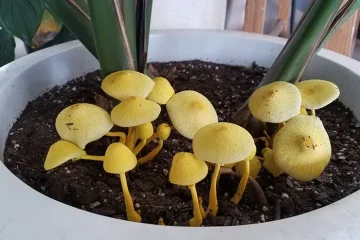Plantscaping, or interior landscaping, is an innovative approach to designing indoor spaces by integrating plants and greenery into architectural environments. It’s more than just placing a few potted plants around a room; plantscaping involves thoughtful design, incorporating living plants to enhance the aesthetics, improve air quality, and create a more serene and inviting atmosphere. From offices to homes, plantscaping has become a vital part of modern interior design, offering both functional and decorative benefits. In this article, we explore the advantages of plantscaping and its role in transforming indoor spaces.
The Evolution of Plantscaping
Plants have always been associated with health, relaxation, and beauty, but the concept of using them as essential design elements has evolved over time. Traditionally, plants were added to spaces mainly for decoration. However, with the rise of biophilic design—a design approach that seeks to connect people with nature—the practice of plantscaping has taken on a more intentional and holistic role. Today, plantscaping focuses on creating a harmonious blend of greenery with architecture, transforming spaces into eco-friendly, calming environments.
Benefits of Plantscaping
Plantscaping offers numerous benefits, making it an appealing choice for residential and commercial settings alike. Below are some of the key advantages:
1. Improved Air Quality
One of the most significant benefits of plantscaping is its ability to improve indoor air quality. Plants naturally absorb carbon dioxide and release oxygen, which contributes to a fresher and cleaner indoor environment. Certain plant species, such as snake plants, spider plants, and peace lilies, are particularly effective at filtering harmful toxins like formaldehyde, benzene, and ammonia from the air. This can result in fewer respiratory issues and a healthier space, especially in enclosed environments like offices.
2. Enhanced Aesthetic Appeal
Plants have an undeniable impact on the visual appeal of any space. Well-placed greenery can soften harsh architectural lines, add a pop of color, and bring a sense of life to otherwise sterile environments. From lush hanging plants to tall, statement-making indoor trees, the options are endless when it comes to plantscaping. Designers can use different types of plants, planters, and arrangements to complement a room’s overall style, whether it’s minimalist, rustic, or modern.
3. Stress Reduction and Mental Health Benefits
Studies have shown that the presence of plants in indoor spaces can help reduce stress and improve mental well-being. Greenery has a calming effect that can help lower blood pressure, reduce anxiety, and boost mood. In workspaces, this translates to better productivity and increased job satisfaction. In homes, plantscaping can create a peaceful sanctuary where inhabitants can relax and recharge.
4. Energy Efficiency
Plantscaping can also play a role in energy efficiency. Plants have the ability to regulate humidity and temperature levels in a room. By increasing humidity through transpiration, they can make indoor spaces feel cooler during hot weather. In turn, this reduces the need for air conditioning, leading to energy savings. In colder months, plants can act as natural insulators, helping to retain heat in the environment.
5. Acoustic Benefits
An often-overlooked advantage of plantscaping is its impact on acoustics. Plants can help absorb, deflect, and diffuse sound, reducing noise levels in indoor environments. This makes them particularly useful in open-plan offices, reception areas, and other spaces where sound control is important. Plants with broad leaves and dense foliage are particularly effective at reducing noise pollution.
Popular Plantscaping Trends
As plantscaping continues to grow in popularity, several trends have emerged that offer creative and innovative ways to integrate plants into indoor spaces.
1. Living Walls
Also known as vertical gardens, living walls are a striking plantscaping feature where plants are grown on a vertical surface. These walls not only make a bold design statement but also maximize space, allowing for more plants to be incorporated into smaller rooms. Living walls are commonly used in corporate lobbies, restaurants, and homes with limited floor space.
2. Biophilic Office Spaces
Incorporating plants into office environments has become a key trend in modern workplace design. Biophilic office spaces focus on enhancing employees’ connection to nature through plantscaping, natural light, and organic materials. This trend promotes wellness and productivity, as research shows that employees in biophilic spaces report lower stress levels and greater job satisfaction.
3. Potted Plant Arrangements
Potted plants remain a classic choice for plantscaping. The versatility of potted plants allows designers to mix and match different species, sizes, and container styles to suit various aesthetics. Whether it’s a large palm in a sleek planter or a cluster of small succulents, potted plants are easy to incorporate into any space.
Choosing the Right Plants for Plantscaping
When it comes to plantscaping, choosing the right plants is crucial for both design and maintenance. Consideration should be given to factors such as light levels, humidity, and temperature. Some of the most popular indoor plants for plantscaping include:
- Fiddle Leaf Fig: Known for its large, glossy leaves, the fiddle leaf fig is a favorite for adding a touch of sophistication to any space.
- Snake Plant: Low-maintenance and highly resilient, snake plants thrive in a variety of light conditions and are excellent air purifiers.
- Monstera Deliciosa: With its distinctive split leaves, the monstera adds a tropical flair to rooms and is relatively easy to care for.
- Peace Lily: A beautiful flowering plant, the peace lily is known for its air-purifying qualities and ability to thrive in low light.
Conclusion
Plantscaping is more than just an interior design trend—it’s a sustainable and practical way to enhance the quality of indoor environments. Whether in homes, offices, or public spaces, plantscaping improves aesthetics, boosts well-being, and contributes to a healthier indoor atmosphere. As the demand for eco-friendly design continues to grow, the role of plantscaping will only become more prominent in creating spaces that are both beautiful and beneficial.



